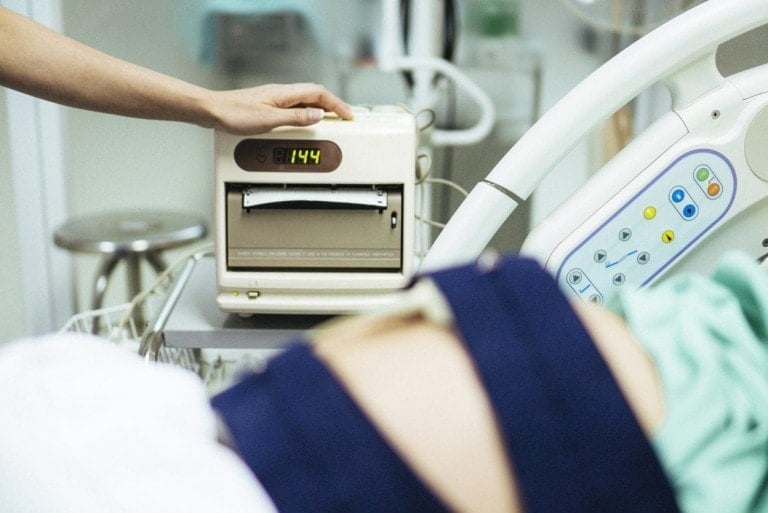From morning sickness to swollen feet, pregnancy brings many physical changes. One lesser-known change is an increase in normal vaginal discharge called leukorrhea (pronounced loo-kuh-ree-uh). Experiencing leukorrhea discharge can be confusing and even scary for expectant mothers. However, understanding what is and isn’t normal for leukorrhea in pregnancy can help alleviate fears and ensure a healthy pregnancy.
Leukorrhea discharge is normal for pregnant and non-pregnant women. Let’s look at what is normal leukorrhea in pregnancy and what is abnormal. Abnormal discharge requires you to seek medical attention to get treatment. The good news is there are many tips and lifestyle changes to help prevent abnormal discharge and help maintain vaginal health.
Normal Leukorrhea in Pregnancy
Normal vaginal discharge is thin, clear to milky white, and has no noticeable or mild odor. This leukorrhea discharge is made up of mostly water but also contains microorganisms and dead cells. Normal discharge keeps the vagina and genital area clean and healthy. It also helps to lubricate the vagina and keep you comfortable.1,3
During pregnancy, leukorrhea discharge progressively increases. Having increased vaginal discharge is one of the early signs of pregnancy. Toward the end of pregnancy, normal leukorrhea can become quite heavy, and many women wonder if this is normal. It is!2
Leukorrhea in pregnancy increases because of changes in your hormones. Estrogen levels rise during pregnancy, causing an increase in normal discharge.4
The large amount of leukorrhea discharge in the last trimester can frustrate many women. Many expectant mothers say they feel constantly wet and change their underwear several times daily. It can help to wear panty liners and to shower or bathe more frequently.3
Abnormal Leukorrhea Discharge in Pregnancy
There are several types of abnormal vaginal discharge or vaginal infections that you can experience. Research has found that vaginal infections are more common during pregnancy for women with low levels of education, low economic status, and poor hygiene. During pregnancy, the risk of vaginal infections increases.2,6
Let’s look at the three most common types of vaginal infections you can have and what the symptoms and treatments are.
Bacterial Vaginosis (BV)
Too much of certain bacteria in the vagina can cause BV. It is common, with 50% of vaginal infections being BV. It is not a sexually transmitted infection but is most common in sexually active women.4,6
Symptoms include the following:6
- Thin white or grey discharge
- Bubbly discharge
- Discharge with a strong fishy odor
- Pain, burning, or itching of the vagina or the outside of the vagina
- Burning sensation when you urinate
If you have BV, you must take antibiotics that kill bacteria. You take the antibiotic by mouth or insert a gel into your vagina.6
Vaginal Candidiasis
Vaginal candidiasis is a fancy medical term for a yeast infection. A yeast called Candida is responsible for this itchy infection. Usually, Candida lives in the vagina without any problem but can cause an infection if conditions change. Because of hormone changes, you are more likely to get yeast infections when pregnant. About 20% to 30% of women get a yeast infection during pregnancy.7,8
Symptoms include the following:4
- Thick white chunky discharge
- Mild but not foul odor
- Itching around the vagina – often intense
- Painful sex
- Pain when you urinate
- Red and swollen vulva
You will need an antifungal medication if you get a vaginal yeast infection. During pregnancy, the most common treatment is topical creams applied inside the vagina. These medications are available over the counter. Some medicines are safer for pregnant women, so consult your healthcare provider regarding which medication to use.8
Trichomoniasis (or trich)
Trichomoniasis is one of the most common sexually transmitted infections (STI) in the world. A parasite causes it. When pregnant, this infection is serious because it is associated with preterm birth, your bag of water breaking early, and low birth weight. Only about 30% of women with this infection have any symptoms.9,10
If you do have symptoms, they may include the following:4
- The amount of discharge can vary from scant to profuse.
- Foul or offensive odor
- Itching around the vagina
- Painful sex
- Pain when you urinate
If you have trichomoniasis, you need metronidazole (Flagyl.) You take this medicine by mouth. Your partner also needs to be treated. Do not have sex until both have you have completed your medication and don’t have any symptoms.11
When to Seek Medical Attention
It’s time to schedule an urgent appointment with your prenatal provider if you have unusual leukorrhea discharge. Abnormal discharge includes unpleasant odor, change in color, vaginal itching or irritation, or you have pain when you urinate. Don’t try to diagnose and treat yourself.
You must also contact your doctor or midwife if you experience vaginal bleeding during pregnancy. Several things can cause vaginal bleeding at different points in your pregnancy. Anytime there is bleeding, contact your provider unless your baby is due and you have bloody mucous discharge. A mucous discharge with blood indicates your body is getting ready for labor.3
Amniotic fluid is watery and usually clear or pinkish. The fluid does not come in a single episode but will keep coming. It is easy to confuse heavy leukorrhea with amniotic fluid. Sometimes it must be confirmed if your water broke and requires an evaluation. Contact your provider or go to the hospital promptly if your water breaks.12
Prevention Strategies
Here are a few tips to help maintain healthy leukorrhea discharge in pregnancy:3,13,14
- Avoid using tampons, as they can introduce new germs into your vagina.
- Don’t douche or use wipes or sprays, as these can upset your normal balance of healthy bacteria in the vagina.
- Avoid wearing tight-fitting underwear, as this can increase moisture in your vaginal area, making you more prone to yeast infections. Wear loose cotton underwear.
- Practice good hygiene after sex. Clean around the vaginal opening with soap and water after sex. Don’t engage in sexual activity that could bring bacteria from the rectum to the vagina.
- Always wipe from front to back when using the toilet to prevent bacteria from the rectum from entering your vagina.
- Eat yogurt with live cultures of bacteria or take a probiotic supplement. The live bacteria cultures help to prevent yeast infections.
- Use condoms to prevent trichomoniasis infections and lower your chance of getting bacterial vaginosis.
- Lower your amount of stress. Increased stress raises the stress hormone cortisol, increasing your risk of vaginal infections.
Who knew there was so much to know about leukorrhea discharge? Leukorrhea in pregnancy can become quite heavy toward the end of your third trimester. Even though this is normal, it can also be annoying. There are many steps you can take to help keep your leukorrhea healthy and to be more comfortable. Knowing what healthy leukorrhea is and what is abnormal can help you decide when to call your healthcare provider. If you have any concerns, please talk to your doctor or midwife.






























